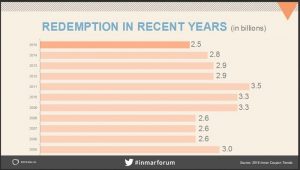These 3 strategies could actually help close the gender pay gap
There are steps leaders in every industry can take to ensure true gender parity in their workplace.
Women in the workplace have come a long way since Rosie the Riveter. In the United States, women today make up 74.6 million of the civilian labor force—about 47% of all U.S. workers and more than half of the college-educated labor force.However, barriers for women in the workforce still exist. Organizations across all industries must recognize these persistent workplace inequalities and take deliberate steps to ensure true equity for all employees.
As we celebrate this year’s Women’s History Month and Equal Pay Day, we must reflect on the crucial role women play in our society and our workforce. The question is not can we support the advancement of women—it’s are we willing to. Here are a few ways leaders in every industry can evaluate their current structure and ensure true gender parity in their workplace year-round.
Equal pay
According to a recent Pew Research study, women have gained significant representation in STEM positions like physicians, lawyers, and pharmacists, and now make up 35% of workers in the United States’ 10 highest-paying occupations—up from 13% in 1980. Still, in 2022, American women earned an average of 82 cents for every dollar earned by men, almost exactly the same disparity that existed 20 years earlier in 2002. And this figure doesn’t consider factors like race and ethnicity which widens this wage gap even further. On average, Black women make 64 cents to the dollar compared to men, and Latina women make only 54 cents.
And this gender pay gap can be seen in multiple industries. For instance, according to Aquent’s 2024 Salary Guide, pay discrepancies range from 8% to 12% between men and women for creative, marketing, and design roles.
There are many contributing factors to this discrepancy. One reason is what experts describe as a “confidence gap”–meaning that because women are more likely to apply to jobs they are mostly or completely qualified for, they end up in lower-level positions than they could have otherwise attained. Over time, this can lead to lower pay compensations and more barriers to leadership positions.
When considering compensation, leaders should base salaries on what the roles are worth and the value employees bring to an organization with pay transparency for all positions. In one promising move, 22 states have implemented policies that prohibit asking about salary history, which helps to break the cycle of low compensation and forces companies to base salaries on qualifications, rather than previous earnings.

Remote work
In 2022, 41% of female workers worked from home full time and only 28% of male workers remained fully remote. While some have championed remote work for its flexibility for working parents, others fear remote work may be a new “mommy track” which could perpetuate gender inequity and expectations around women as the primary caregiver. In addition, remote workers are 31% less likely to be promoted than in-office workers. Taken together, while working from home could seem to offer more parity and flexibility for women, I fear that biases and barriers that remote workers face could disproportionately affect women, replacing the glass ceiling with a new “glass screen.”
Remote work is a better option for many people, not just mothers, and should be offered to all employees without jeopardizing their career trajectory. As leaders, we have an obligation to ensure equity across all employees—no matter where they work from and what parental or other personal responsibilities they may have.
Career progression
Allyship, and its less-known counterpart, sponsorship, are crucial in showing our personal solidarity and investment in an equitable workplace, regardless of whether or not these disparities affect us personally. For instance, one study found 91% of white Executives do not have a single person of color in their professional networks—and that 78% of corporate leaders used their inner professional networks to fill vacant roles. We can’t hire equitably if we don’t recognize who is not there. We must also go outside our own circles and look for other ways to include underrepresented groups, whether that is working with colleges and universities, or seeking out more diverse business networks. Support from influential players in organizations sets expectations for others that they should do the same and reiterates the importance of advocacy in the workspace.
I know firsthand the impact that good mentors, sponsors, and allies can have. They speak your name in rooms of opportunity and advocate for you constantly in ways large and small. This experience has only strengthened my conviction to provide this support for others and bring them up with me. And every leader should be thinking about their workforce—especially the team members from marginalized communities—the same way.
Maternity and parental leave is another area where leaders can be intentional to ensure equity. Even the phrase “maternity leave” implies that women will carry the majority of the caregiving responsibility. In fact, 3 in 10 women believe having children hurts women’s careers. Instead, leaders should consider parental leave policies that accommodate all relationships, genders, and ways that people become parents equally.
Calendar holidays and dedicated months (including Womens’ History Month) can feel forced and insincere, but they are also important in spurring moments of reflection. Women in the workplace continue to face challenges that limit access to career growth and pay, and as leaders we need to take a vested interest in not just recognizing these challenges, but removing them from the equation.
ABOUT THE AUTHOR
(9)
Report Post







